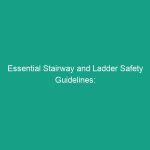Good Morning Team!
Today, we’re diving into an essential topic that impacts each and every one of us here: Rationalizing Unsafe Choices to Avoid Critical Risks. Understanding how to identify and address unsafe decisions in our daily work can significantly enhance our Safety culture and prevent potential accidents.
Understanding Rationalizing Unsafe Choices
Rationalizing Unsafe Choices refers to the thought processes employees may go through to justify actions that deviate from established Safety protocols. This behavior often stems from a desire to save time, meet deadlines, or simply out of habit. Recognizing this tendency is crucial because it can lead to serious workplace accidents, injuries, or even fatalities.
Every day, we face situations where we must choose between efficiency and safety. Understanding this concept is vital as it impacts our operations, workplace Environment, and collective well-being. A common misconception is that taking shortcuts will save time without consequences; however, the reality is often different. An unsafe choice can lead to severe repercussions not just for the individual involved, but for the entire team and organization.
Key Hazards, Risks, and Safety Considerations
It’s imperative to recognize the specific Hazards associated with rationalizing unsafe choices:
- Inadequate Safety Gear: Skipping Personal Protective Equipment (PPE) to save time can expose employees to serious health risks.
- Ignoring Protocols: Bypassing established safety Procedures can lead to dangerous situations, including equipment failures or accidents.
- Complacency: Regularly rationalizing unsafe choices can create a workplace culture where employees feel it’s acceptable to overlook safety.
The consequences of ignoring these safety protocols are not just theoretical. Studies have shown that workplaces with high rates of safety violations often experience increased incidents of injuries and fatalities, leading to lower morale and productivity.
Best Practices, Procedures, & Actionable Advice
To combat the tendency to rationalize unsafe choices, here are some Best Practices you can apply immediately:
- Follow Safety Protocols: Always adhere to the established Safety Measures. If you’re unsure about a safety procedure, ask a supervisor.
- Wear PPE: Make it a habit to wear your Personal Protective Equipment at all times when required. It’s there for your protection.
- Take Your Time: Prioritize safety over speed. Taking a few extra minutes to ensure safety can prevent accidents and save lives.
- Communicate: Speak up if you notice unsafe practices. Discussing safety openly fosters a culture that prioritizes well-being.
Let’s consider a brief case study: A construction team decided to forgo wearing helmets because they were “just moving a few items.” Within minutes, a tool fell, resulting in a severe head injury. This incident could have been avoided if the crew had adhered to safety protocols and recognized the potential risks involved.
Regulations, Standards, and Compliance
Understanding the regulatory environment is critical to maintaining Workplace Safety. Here are some key Standards to keep in mind:
- OSHA Regulations: The Occupational Safety and Health Administration outlines mandatory safety requirements that protect workers. Familiarizing yourself with these regulations is essential.
- ISO Standards: International Organization for Standardization (ISO) standards promote safety and efficiency in various industries. Compliance with these standards can enhance Workplace Safety.
- Company Policies: Each organization has specific safety policies tailored to its operations. Ensure you are aware of and comply with these policies.
Compliance with these standards is not just about avoiding penalties; it’s about protecting yourself and your coworkers. Non-compliance can lead to severe consequences, including workplace accidents and legal repercussions for the company.
Employee Engagement & Discussion
Now, let’s engage in a discussion. Consider the following questions:
- What safety challenges have you encountered related to rationalizing unsafe choices?
- Can you share an experience where prioritizing safety made a difference?
- How can we improve our safety culture to discourage unsafe choices?
Feel free to share your thoughts. Engaging in conversations about safety can help us all learn and grow together.
Conclusion & Key Takeaways
In summary, rationalizing unsafe choices can lead to critical risks that jeopardize our health and safety. By understanding this concept and its implications, adhering to safety protocols, and promoting open discussions, we can foster a safer workplace environment.
Let’s commit to prioritizing safety in everything we do. Remember, taking the time to ensure safety is never a waste; it can save lives. Thank you all for your attention and your dedication to keeping our workplace safe!


